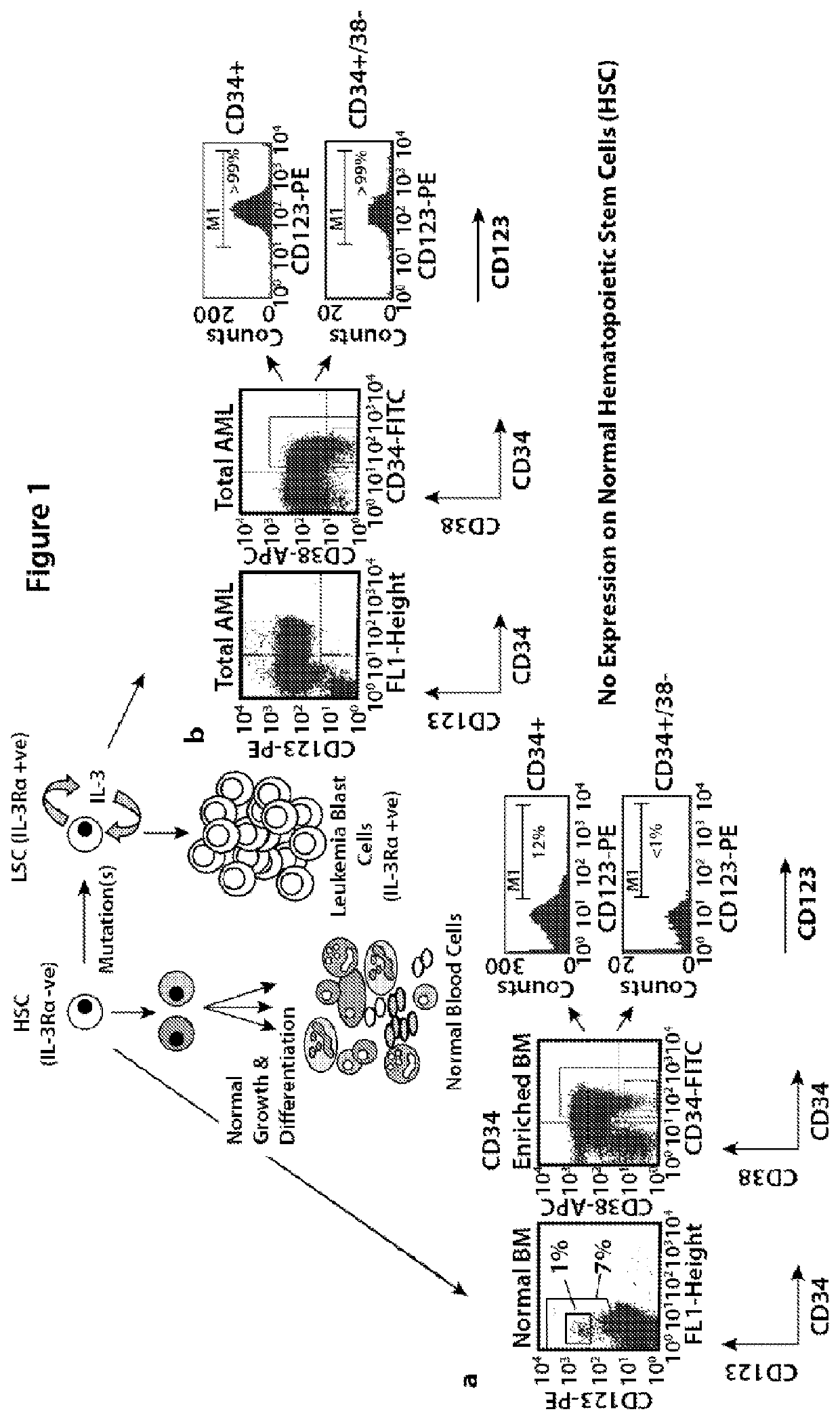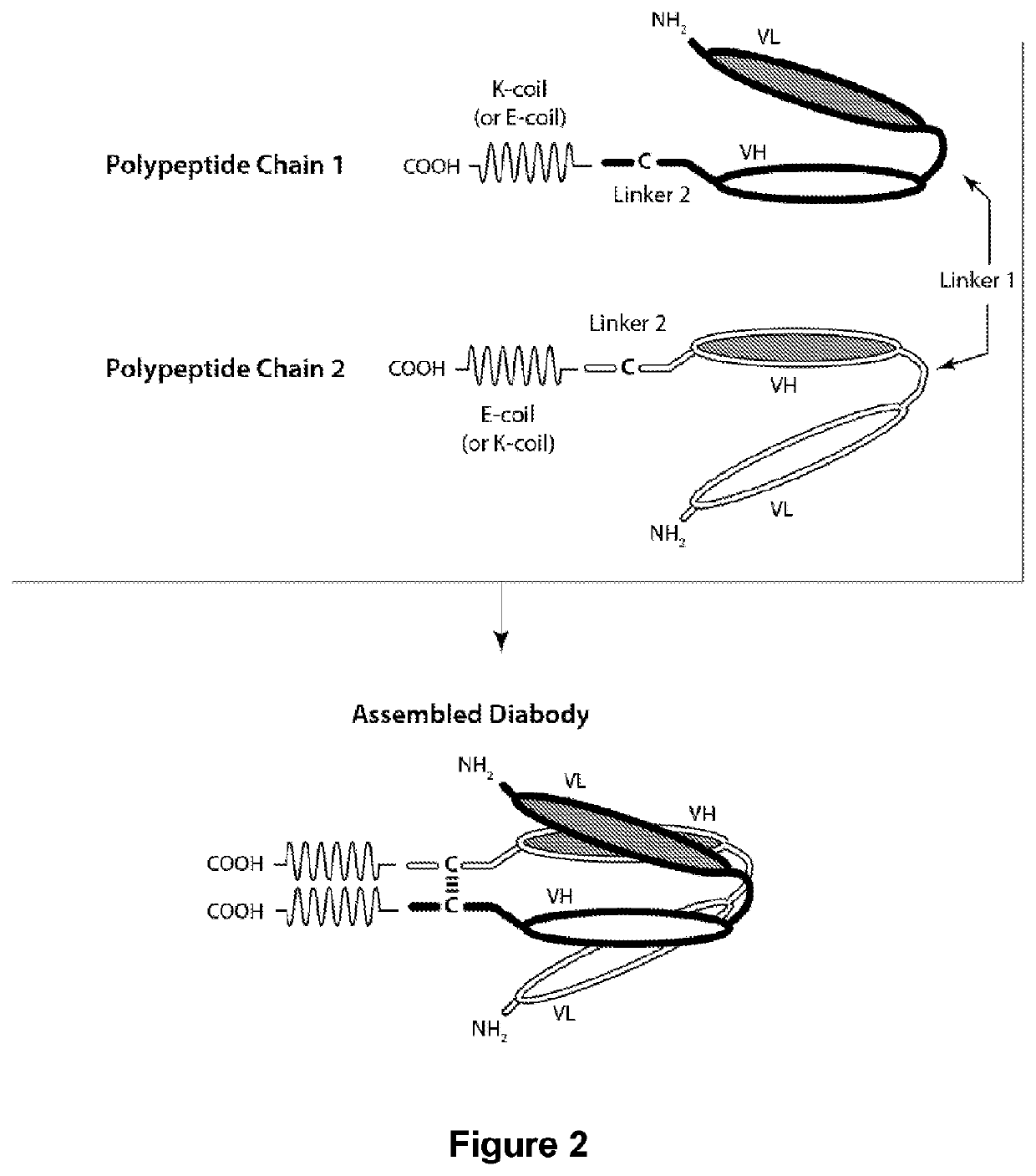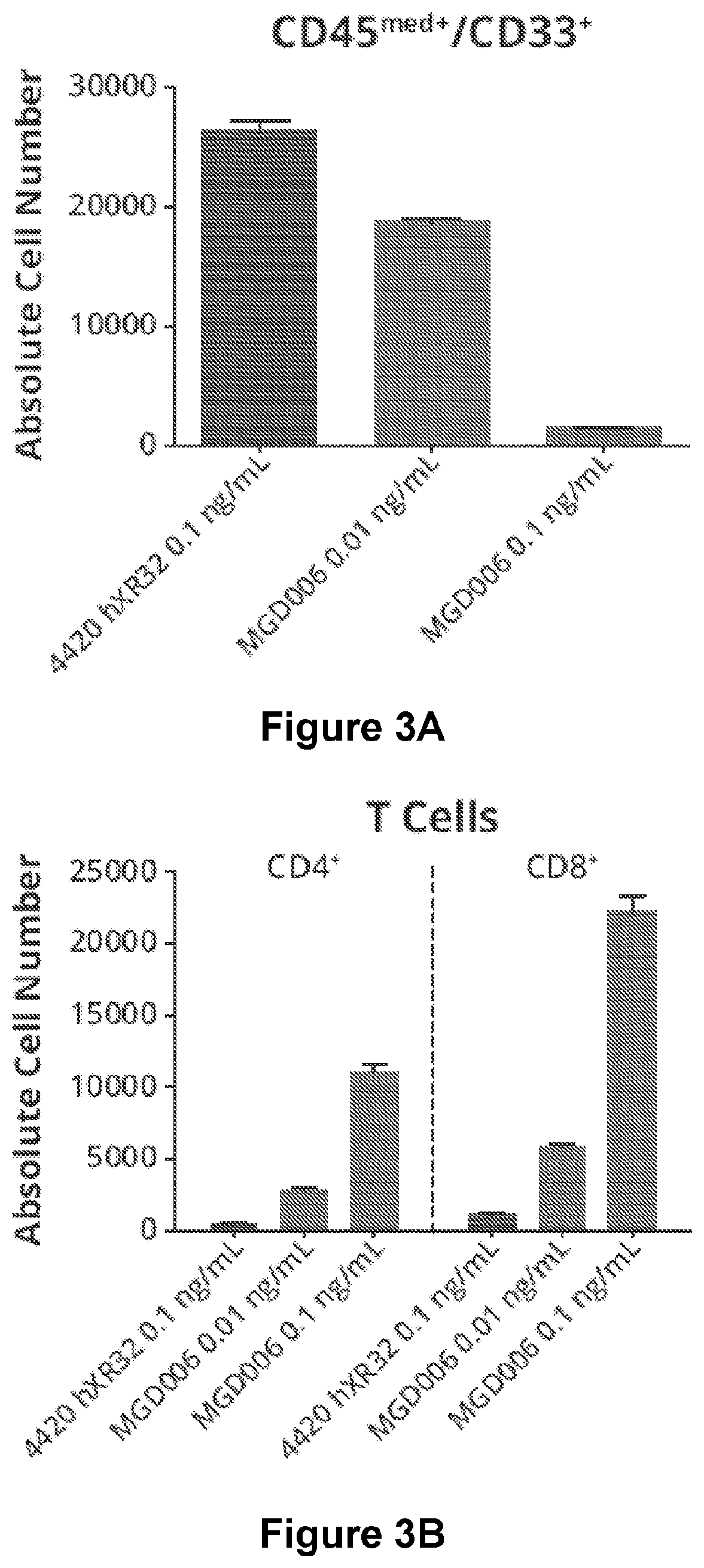Dosing Regiments of Bi-Specific CD123 x CD3 Diabodies in the Treatment of Hematologic Malignancies
a cd123 and cd3 technology, applied in the direction of antibody medical ingredients, drug compositions, peptide/protein ingredients, etc., can solve the problems of hematopoietic failure, nausea and vomiting, and the death of most adults with aml from their diseas
- Summary
- Abstract
- Description
- Claims
- Application Information
AI Technical Summary
Benefits of technology
Problems solved by technology
Method used
Image
Examples
example 1
Activity of CD123×CD3 DART® Molecule in Primary AML Patient Samples
[0144]The ability of DART-A to kill CD123-expressing cells of primary AML patient samples was investigated. AML patient primary PBMCs (containing 82% blasts) were treated with a CD123×CD3 DART® molecule, a FITC×CD3 control DART® molecule, or phosphate buffered saline (PBS) for 144 hours. The E:T cell ratio was approximately 1:300 as determined from blast and T cell percentages in PBMCs at the start of the study. The absolute number of leukemic blast cells (CD45+ / CD33+) is shown in FIG. 3A. The absolute numbers of T cells (CD4+ and CD8+) are shown in FIG. 3B. FIG. 3C shows T-cell activation. Cytokines measured in culture supernatants are shown in FIG. 3D.
example 2
Phase 1, First-in-Human Study of CD123×CD3 DART Diabody in AML and MDS
[0145]Acute myeloid leukemia (AML) is characterized by the expansion of CD34+, CD38− cells with high levels of CD123, the alpha chain of the interleukin 3 receptor (IL-3Rα). CD123 is highly expressed in >90% of AML patients and at least 50% of MDS patients. CD123 expression in AML blasts has been related with high-risk disease and disease progression, enabling a promising strategy of preferential ablation with CD123 targeted approach. Because AML blast and leukemic stem cells highly express CD123, which is associated with high-risk disease and disease progression whereas CD123 expression on normal hematopoietic stem cells is minimal, AML (and myelodysplastic syndrome (MDS)) are reasonable targets for CD123-based immunotherapy.
[0146]The DART-A molecule of the present invention shows potent activity to target CD123-expressing cell lines and primary AML blasts in vitro for recognition and elimination by CD3-expressin...
PUM
| Property | Measurement | Unit |
|---|---|---|
| Frequency | aaaaa | aaaaa |
| Frequency | aaaaa | aaaaa |
| Frequency | aaaaa | aaaaa |
Abstract
Description
Claims
Application Information
 Login to View More
Login to View More - R&D Engineer
- R&D Manager
- IP Professional
- Industry Leading Data Capabilities
- Powerful AI technology
- Patent DNA Extraction
Browse by: Latest US Patents, China's latest patents, Technical Efficacy Thesaurus, Application Domain, Technology Topic, Popular Technical Reports.
© 2024 PatSnap. All rights reserved.Legal|Privacy policy|Modern Slavery Act Transparency Statement|Sitemap|About US| Contact US: help@patsnap.com










